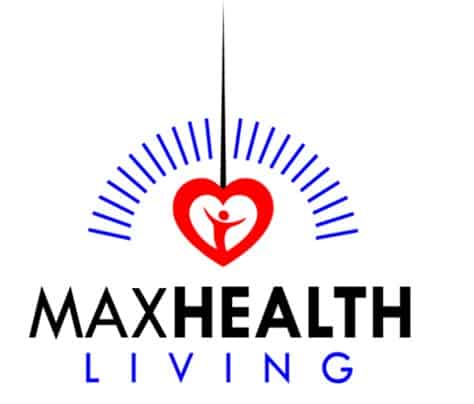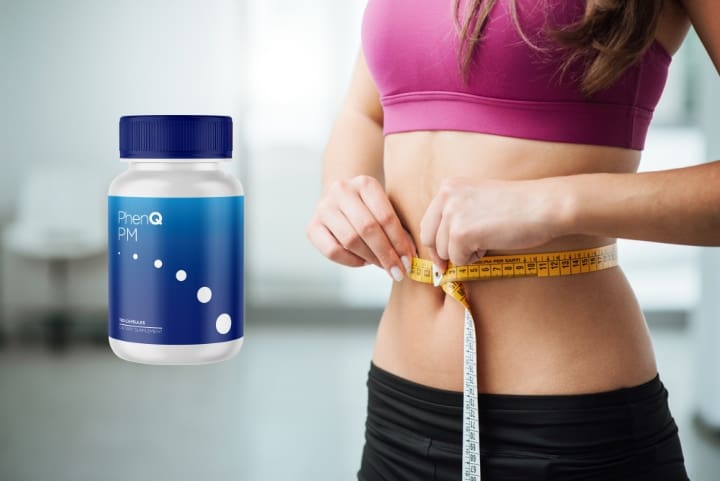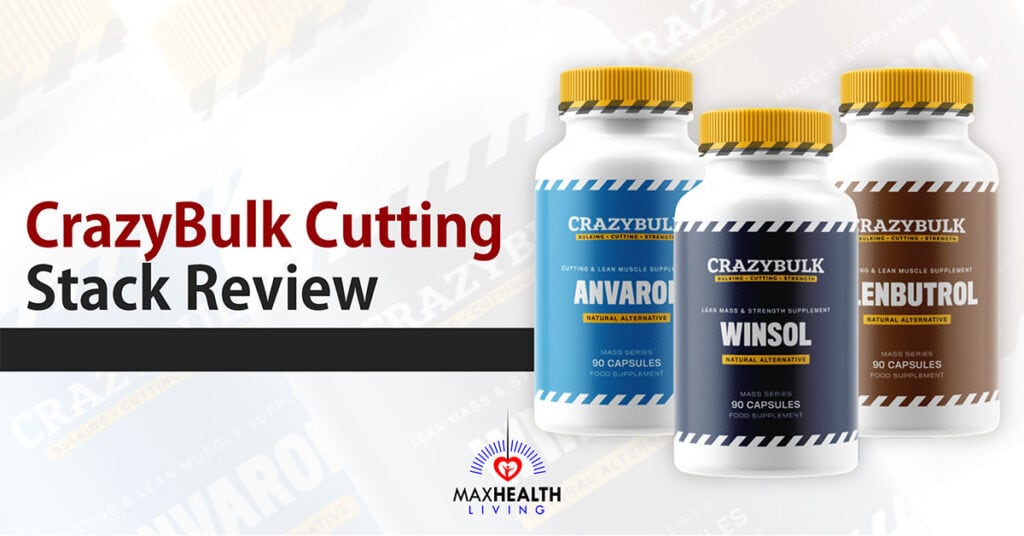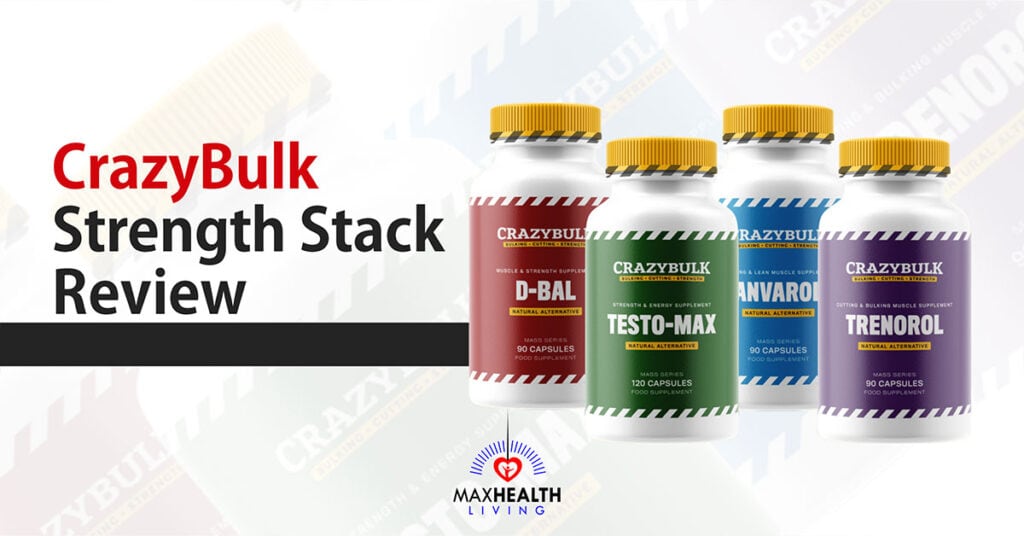61 Dope Anabolic Steroid Statistics & Facts 2024 (INFOGRAPHIC)
Max Health Living is a reader-supported site. Purchases made through links may earn a commission. Learn more.
The global anabolic steroid market is estimated to reach around 8.5 billion dollars by 2027 and 10 billion by the end of the decade. And of gym-goers, around 6% of men and 2% of women have used steroids.
But there’s more to the above steroid stat.
To most people, steroid use is a shady underworld of illicit drugs and sports doping, but it’s more common than you might think.
Let’s take a quick tour of the real statistics around steroid use and what they can tell us about the epidemic of performance-enhancing drugs.
These statistics are why you shouldn’t trust everything you see from elite athletes and sports news.
Steroid Use Background: Can We Ever Know the Truth?
First, it’s important to accept you’ll never get the full truth about steroid use. Yeah!
Because 56% of steroid users never even tell their doctor about their use.
There are likely even more users that don’t tell scientists about their use, which produces a huge “dark statistic” – for every steroid user that discloses their use, there are likely as many that don’t.
We can only get a general idea of confirmed use and then adjust based on other factors like anecdotes, cultural differences, and other factors.
Take these statistics with a pinch of salt.
We’ll discuss some of these issues when we look at mismatched statistics – which tell us more than you might think about steroid use and behavior!
Steroid Use Statistics
Across the general population of the United States, roughly 1 in 100 people have admitted to steroid use (around 3 million total users).
The global anabolic steroid market (that we know of) is estimated to reach around 8.5 billion dollars by 2027 and 10 billion by the end of the decade.
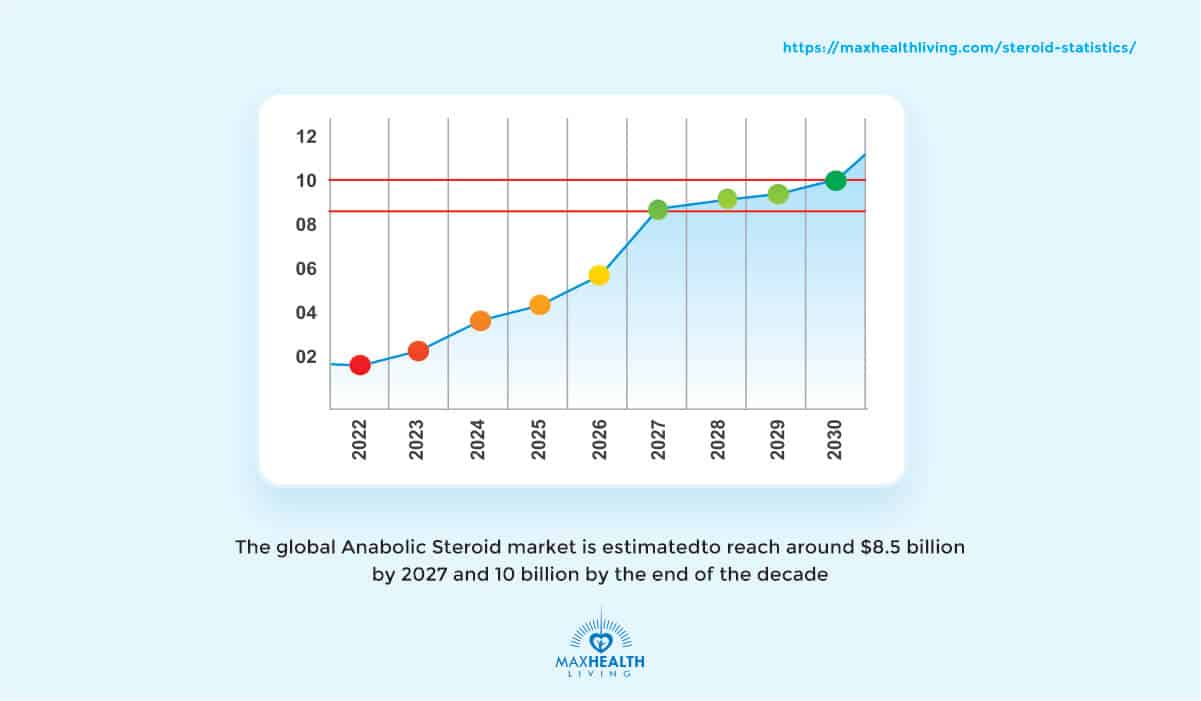
Unknown sales and markets may make this number considerably higher.
Let’s look at some of the most important statistics about these illicit drugs – where they’re found, who is taking them, and their effects on the body.
- Of gym-goers, around 6% of men and 2% of women have used steroids.
- The fastest-growing group of steroid users is teen girls, according to JCEM.
- A 2017 CDC report on Youth Risk Behaviour Surveillance suggests that 1 out of 42 girls took anabolic steroids at some point for aesthetic or sporting reasons.
- The median-average age of a steroid user is 25, with most taking steroids in their 20s.
- Under-25 and 25-35 categories are the 2nd and 3rd most common age brackets, respectively.
- Steroids are surprisingly easy to get, with 41% of users saying they’re very easy to get.
- Steroids are also relatively cheap, often costing less than a gym membership for a basic cycle.
- Despite being among the safest steroids, testosterone is the most common steroid for men.
- “Anavar” is the most common steroid used by women, but…
- Most Anavar on the market is faked or cut with other drugs (typically Winstrol aka Stanozolol).
- Nearly 50% of anabolic steroid users list the internet as their main source of steroid information, significantly more than any medical professional.

- However, average users spent a significant amount of time – around 250-300 hours – on research before starting a cycle of steroids.
- Nearly all (99%+) steroid users inject steroids intramuscularly, even using other (oral) drugs.
- 80% of steroid users “stacked” their drugs, taking multiple AAS compounds.
- 54% of male bodybuilders admitted regular steroid use, which is likely still too low to represent top-level competition.

- Only 10% of female bodybuilders admitted to regular anabolic steroid use – as, with the men, this is likely skewed by casual, semi-pro, and natural bodybuilding competitors.
- Steroid manufacture and use are highest in the United States and EU (when using gross numbers).
- Steroid powder and component production are the highest in China.
- China is considered the largest dealer of “designer steroids” – high-level test-beating substances – for athletes.
- 40% of steroid users practice post-cycle therapy and anti-aromatization use (though some never come off, using “blast and cruise” methods).
- Domestic steroid use rates can vary wildly between regions and demographics – e.g., some areas of the UK and Saudi Arabia saw steroid use in men at over 25%.
- Despite being the largest users of therapeutic steroids, men aged 40+ typically had a use rate of around 2-3%.
These are the rates of steroid use in the population, where the worst results affect health.
But what about the people who use sports as a career and steroids as a way to earn a living or cheat others out of their achievements?
Let’s look at the special sports population – and the use of steroids in professional sports, with their steroid statistics and doping facts!
Steroids Statistics in Sports
While WADA reports show a reduction in positive tests from 2016 to 2017 (from 1.81% to 1.48%), anyone in the know is aware that steroids are a huge part of professional and elite sports.
This also shows that you can’t always trust statistics without context.
The adverse findings went down because 2016 was an Olympic year, resulting in larger volumes of drug tests and thus adverse results.
Steroid use is a cornerstone of elite sport, as seen in the BALCO and Heredia cases,
Look at the more recent Icarus-Rodchenko scandal and the use of doppelgangers for doping samples by Russian sports agencies for more proof of prevalent steroid use in sports.
Let’s look at some everyday statistics showing steroid use in sports.
- Steroids were first used in sports in 1954 with testosterone injection into Soviet Russian athletes.
- Later, the Soviet East German weightlifting team was caught with Turinabol, which exploded sports doping onto the public stage.
- Accidental reveals of testosterone derivatives produced large-scale inquiries in major league sports – with steroid use in the NFL, NBA, NHL, and MLB.
- Steroid use in sports stats in high schools – with around 25% of athletes suggesting that you need steroids to go professional.
- This is backed up by the evidence – with a minimum of 16.5% of NFL linemen using steroids – again, the regular users who admitted to using – while insiders speculate that 75% of linemen are users.
- High school athletes use steroids at roughly 2%-4% per year, with even higher statistics as age increases.
- A 2001 CDC study suggested increasing some high school athletes up to 5% steroid use every year, with regular users being more common.
- Only 20% of high schools test their athletes, making it easy for many young athletes to take steroids without reprisals or alerting healthcare professionals.
- Some sources suggest 50% as a minimum statistic for professional athletes using steroids, while the total is likely higher at top and semi-pro levels.
- Stanozolol is one of the most popular failed drug test causes due to its use as a cutting agent (to improve force-to-weigh ratios) and is easier to detect than other steroids.
- One-third of all men’s weightlifting medallists from the 2016 Rio Olympic games had prior doping sanctions. Others were later found to have tampered with samples during the Icarus-Rodchenko scandal.
- Examples of drug test catch vs. users show drastic divergence: a suggested 50% of athletes use steroids while WADA sanction rates are typically up to 2%.
- For example, Lance Armstrong had passed 100s of drug tests and failed one, despite admitting to a lifetime of steroid use after the fact.
- Another example – FIFA reports a soccer player “pop” rate of around 0.28% – which is more likely to suggest poor testing or deliberate data manipulation than a real drug use rate of 1 in 355 among professional and semi-professional soccer players.
- Not all performance-enhancing drugs are steroids – beta-blockers, amphetamines, cannabinoids, and other drugs are on the WADA banned list – and many athletes have been banned for their use.
MLB Steroid Statistics
- 11 of 12 negative drug tests in Major League Baseball were due to stanozolol, for example.

- During the watermark Jose Canseco case, Canseco attested to an estimated 85% of major league baseball players using performance-enhancing steroids.
- MLB internal testing suggests around 5-7% of players use (or have used) anabolic steroids – which suggests poor reporting or testing procedures compared to anecdotal numbers.
- Despite numerous scandals, no MLB players were suspended for drug use before 2005.
- The mandatory suspension for MLB players found using steroids is ten days – a laughably poor punishment.
- MLB drug suspensions range from 1 to 15 players a year, which suggests a relatively small testing pool, or poor implementation of the testing protocols
Steroid Legal Statistics
- Steroid charges are split into possession (a less serious felony) and trafficking.
- The maximum penalty for trafficking steroids for use in humans is five years – or a 250,000-dollar fine.
- Possession of steroids in the United States can include a year’s jail sentence and/or a $1000 – $5,000 fine. These are often nominal upper limits and typically see most use in sellers or suppliers.
- Some sources suggest that up to 25% – or 1 in 4 – urban police officers in the United States used anabolic steroids in some territories. This complicates the questions of law enforcement around illicit steroids.
Steroid Death and Side Effect Statistics
- Interestingly, 93% of steroid users and bodybuilders reported dissatisfaction with their bodies.

- 90% of AAS users do not trust the knowledge and advice of a pharmacist or physician on the use of anabolic steroids.
- 40% of deaths associated with steroid abuse are either homicide or suicide – likely related to the significant exaggeration of underlying mental health conditions.
- Steroid side effects occur in 50% to 99% of users.
- Prostate complications (such as hyperplasia) occur in at least 18% of men who use steroids. Though this relies on testing, which is uncommon, and studies are not long-term enough to accurately gauge risks, they are likely much higher.
- Skin problems and acne occur in around 12% of men, though likely higher at sub-clinical levels.
- Gingivitis is a common steroid side-effect, with 9-10% of users experiencing some significant problems.
- Myalgia – muscle pain – is generally very common at 8% but significantly higher at injection sites due to inflammation and potential nerve pain.
- Prostate cancers occur at 3% in some studies. However, this is likely higher due to the rarity of prostate testing, the difficulty of spotting cancers, and the long-term risk of steroid use (prostate cancer also represents around 7% of all cancer deaths).
- 1 in 4 steroid users is likely to develop severe dependence on other psychological harm to their steroid use.

- In addition to addiction, steroid users are up to 3x more likely to die prematurely.
- Most high-profile deaths in bodybuilding and other steroid user populations occur from non-testosterone compounds – like insulin and diuretics.
These statistics show that sports still depend heavily on steroid use at the top level – but also that there’s no real chance of WADA catching all users.
The discrepancies in anecdotal and expert-insider reports on steroid use vs. catch rates and official statistics show that drug use is still common.
They may just be overlooked (either because of the limits of testing or deliberately).
Sports will always have cheaters, and it’s in this context that steroids got a bad reputation.
The health implications are bad, but the betrayal of sporting ethics is why most people consider steroids a negative drug class.
While the average steroid user only compromises their health, the athlete is creating an unfair playing field for non-cheaters.
Anabolic Steroids Statistics Infographic

Steroid use FAQs
What percent of athletes use steroids?
Studies suggest that athletes use steroids around 17% of the time.
But those studies have many limitations – such as testing methods and athletes admitting to regular use.
Admission rates are famously low for illicit drugs, while irregular and historic use are also common.
Most athletes and professionals in the field estimate a 50%+ use rate.
Interviews with steroid producers and dealers (most famously the Heredia and BALCO scandals) suggest that all elite-level athletes use performance-enhancing drugs.
Simply, it’s better to assume everyone is on and that there are rare exceptions – rather than the other way around.
What percentage of guys use steroids? (up to 6.5% depending on cohort)
Most studies suggest that 5-7% of men have used steroids at least once in most countries.
These statistics go up to around 20% of admitted, regular users in sports and bodybuilding, though the actual numbers for these groups are likely higher.
What percentage of bodybuilders use steroids?
Studies on bodybuilders suggest that around 20% have admitted to regular use.
This includes the whole variety of bodybuilders, which skews the statistic down.
All elite open-weight bodybuilders are on steroids, as are their counterparts in classical bodybuilding, most men’s physiques, and most others.
Bodybuilding is closely intertwined with steroid use and always has been – though ‘natural bodybuilding’ is gaining traction as a cleaner alternative.
Steroid statistics in sport (report discussion)
The average steroid use in sports is around 20%; this depends on who you’re studying and which sports.
Some are higher – with around 1/3 of all men’s weightlifting medallists at the 2016 Olympic games already having a prior sanction – not to mention those still evading positive tests.
Sports steroid use is tiered with the best in the world nearly all using steroids – at least in Olympic and major league sports – according to insiders.
Studies are unreliable but allow us to put estimates of general sports doping at around 7-50%.
There is a huge variety between sports and the sexes.
What are the Steroid Death Statistics?
Steroid users are 300% more likely to die prematurely, and this only increases with the use of some specific compounds – like insulin, prohormones, and diuretics.
HGH and other forms of non-steroidal anabolic compounds can have serious health implications.
40% of steroid-related deaths are in homicide and suicide cases, where the psychological effects are most damaging in people with underlying mental health conditions.
Equally, most steroid-related “natural” deaths are associated with worsening preconditions and a general decline in heart, liver, and hormonal health.
Are steroids addictive?
Steroids are addictive to people with addictive personalities and underlying mental health problems.
Use in athletes is typically less addiction-prone, while up to ¼ of bodybuilders using AAS report mental dependence – and that’s only the ones that admit to using in studies.
93% of bodybuilders using AAS report dissatisfaction with their bodies (classified as a negative emotion – not just the desire to improve), and associated mental health problems with steroid use are common.
Overall, we know that you can develop steroid addiction and low-level dependence.
You’ll also need to decide between constant use or post-cycle therapy, both of which have mental and physical side effects.
Conclusion
Steroid use is more common than you think for athletes and normal people.
Whether for an Olympic gold medal or a better beach body, all kinds of people are willing to risk compromised health in exchange for better short- and mid-term results.
In normal people, the rates are lower, while the pay-off is simply a better body.
The only real trade-off is your health.
That’s a choice for the individual, but it’s important to seek proper medical guidance, although so many people don’t.
In sports, drug use is cheating and goes against the idea of what sport is and is about.
While elite athletes continue to evade tests and use drugs, you must change your expectations so that you’re not led astray by what is possible with and without steroids.
Doping in sports is common and continues to be a hot talking point among athletes and coaches.
There will always be cheaters in sport, but in the real world, it’s about health and wellbeing, honesty and openness – not just results.
Important Disclaimer: The information contained on MAX HEALTH LIVING is intended for informational and educational purposes only. Any statements made on this website have not been evaluated by the FDA and any information or products discussed are not intended to diagnose, cure, treat, or prevent any disease or illness. Please consult a healthcare practitioner before making changes to your diet or taking supplements that may interfere with medications.
Who We Are

We are a team of fitness, health, and supplement experts, and content creators. Over the past 4 years, we have spent over 123,000 hours researching food supplements, meal shakes, weight loss, and healthy living. Our aim is to educate people about their effects, benefits, and how to achieve a maximum healthy lifestyle. Read more.
